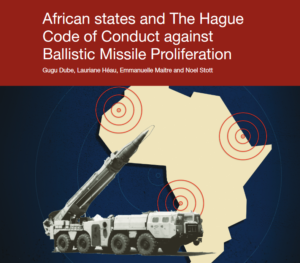North Korean Short Range Systems
Military consequences of the development of the KN-23, KN-24 and KN-25
In-Depth Report
North Korea’s recent flurry of missile tests, in particular of short-range missiles, has put the spotlight on its efforts to develop new capabilities in this range and to replace Soviet-inherited weapons with modern and accurate systems. Especially, the development of the KN-23, the KN-24 and the KN-25 is bound to be significant in Pyongyang’s capacities and strategy. This study focuses on the new systems introduced, and assesses their potential impact as conventional weapons and as non-conventional weapons. Through an analysis of the possible capacities of these systems, this study examines their consequences on North Korean strategy. It concludes by exploring what this change of strategy may lead to, in military terms, and in political terms, on the Korean peninsula.
JANUARY 2023
Stéphane Delory
Antoine Bondaz
Christian Maire
GEO4i
Characteristics and limitations of the short-range arsenal today
As a result of the asymmetry between North Korea’s conventional forces and those of South Korea and the United States, North Korea has built its national defence strategy around weapons of mass destruction (WMD), firstly chemical (and possibly biological), and then nuclear. As such, the country has constructed its military capability primarily in line with a logic of threatened use rather than actual use, for North Korean forces would undoubtedly be incapable of sustaining an exclusively conventional conflict.
North Korea’s short-range deep strike architecture has long been built around two families of missiles: the short-range Scud B (Hwasong-5) and Scud C (Hwasong-6) systems with ranges of 300 and 500 km, and the very short-range KN-02 (Hwasong-11/Toksa) systems with a range of between 120 and 170 km, which are domestic derivatives of the Russian SS-21A Tochka missile. The specifications of the Scud and KN-02 systems show that their precision remains low, with a circular error probable (CEP) estimated around 900 to 1000 m at maximum range for the Scud-derivated systems and above 200 m for the KN-02.
While different operational options could be considered for these weapons, notably because of the conventional and chemical capabilities, their lack of accuracy, the limited size of the arsenals, and, on the other hand, the development of missile defence in South Korea means that until recent years, any military approach other than deterrence was nearly unfeasible for North Korea. The current modernization of the short-range arsenal, around more accurate missiles, able to overcome missile defence may change his situation. This study assesses how this new capability may widen North Korea military options, notably in the framework of a coercive strategy carried through limited operation. Nuclear operations are not considered here.

Specifications of the new weapons: KN-23, KN-24 and KN-25
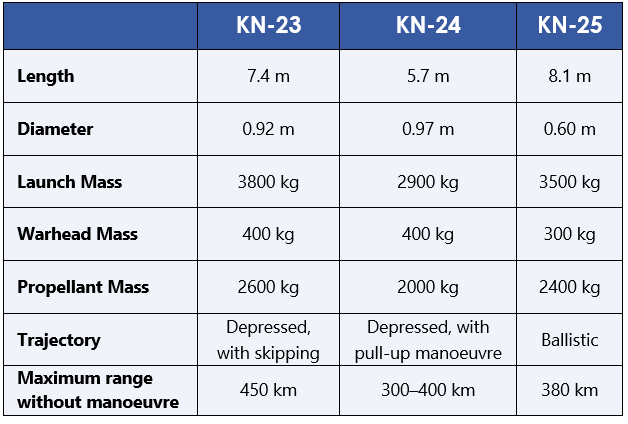
North Korea’s short-range arsenal is being transformed in two main ways: first, through the development of solid propellant manufacturing capability; and second, through the development of expertise in the technologies of quasi-ballistic missiles. Pyong-yang may have settled on the choice of a quasi-ballistic missile between the end of the 1990s and the mid-2000s. This decision required ambitious invest-ments in the industrial infrastructure but also the acquisition of very specific technologies, notably in terms of navigation and guidance. In light of these production challenges, had Pyongyang been solely in search of more accurate systems, it would probably have pursued missile with manoeuvrable re-entry vehicles. In opting for quasi-ballistic missiles, North Korea probably sought to increase the ability of the arsenal to overcome missile defence in order to ensure its capability to strike in every circumstances.
Pyongyang’s efforts have led to the development of three different systems, which have been tested and displayed more than 50 times since 2018.
The KN-23 is very similar to the Russian SS-26E (Iskander), especially regarding its design, proportions, aerodynamic characteristics and launching vehicles (TELs). However, the KN-23 has a greater range, suggesting a greater propellant mass and a greater diameter than usually assumed. Since 2021, a heavier version of the KN-23 has been displayed and tested.
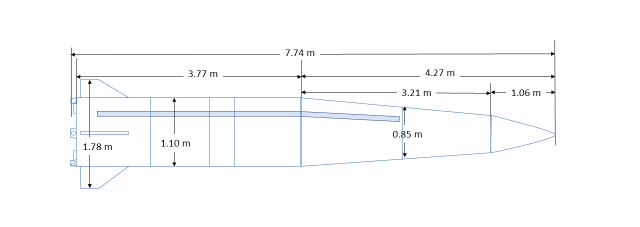
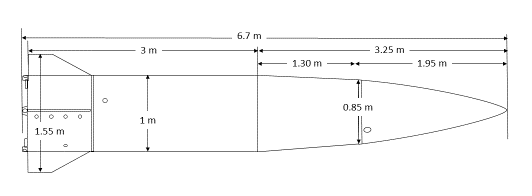
The KN-24 is a solid-fuel single-stage ballistic missile with a non-separating warhead, launched from a mobile launcher. It is generally considered to be a North Korean copy of the US MGM-140 heavy guided rocket (ATACMS), although much bigger and conceived with national technologies. The KN-24 is probably a weapon designed for all-terrain use, following the logic of heavy guided rockets provided to long-range artillery units, possibly with the aim of supporting ground units.
Unlike the KN-23 and KN-24, the KN-25 is not a quasi-ballistic missile but a ballistic weapon. Although its range, observed at a maximum of 380 km, may result in its being classified as a ballistic missile, its design is that of a guided artillery rocket, with an unusually flat trajectory, which greatly increases its ability to overcome missile defence. The KN-25 has attracted less attention than the KN-23 and the KN-24 but it may represent a real breakthrough, being produced massively and generating numerous vulnerabilities on the battlefield and its depth. The development of the KN-25 is probably an important event, as it shows that North Korea is now capable of producing very high performance weapons systems, possibly with minimal assistance from outside.
Potential operational uses
In a context in which Pyongyang has a nascent strategic and non-strategic nuclear capability, it is nonetheless clear that the development of the short-range arsenal represents a real capability shift that widens the military option of North Korea, notably in the framework of a limited military crisis. For example, a strategy based on graduated conventional strikes on the theatre, rhetorically linked with the potential use of WMDs, would give the country non-negligible crisis management tools.
Assuming that the defences currently deployed in South Korea would be significantly less effective against North Korea’s quasi-ballistic systems, the increased accuracy of its missiles substantially improves North Korea’s strike options and notably to engage exclusively military targets with conventional weapons, adding a certain flexibility in managing escalation. Furthermore, Pyongyang may also carry out selective operations against economic or military installations with a high symbolic impact or high industrial added value. This deterrence based on the ability to hold at risk major economic assets is nearly unique, as only very few other major industrial powers are exposed to conventional strike systems capable of having a lasting effect on entire sectors of the economy, in key sectors for global value chains. The increased accuracy of the new generation of missiles also increases the risk of limited chemical strikes against military targets in the depth of South Korea. The anticipated deployment of tactical nuclear weapons by North Korea as well as its nascent strategic capability raises disturbing questions about the nature of the US response in case of such a use.
While the doctrines governing the use of these short-range strike capabilities remain unclear, numerous tactical options are available. North Korea will eventually boast a coherent strike architecture organised in such a way as to facilitate the engagement of the force elements that pose the greatest threat to its own posture, namely missile defence systems, artillery deployments, and logistics concentrations. Moreover, the development of a conventional strike capability does not preclude the use of WMDs. As the regime made explicitly clear in its new nuclear doctrine adopted in September 2022, its nuclear capability is being considered by the regime at both the strategic and tactical levels, and even though the main mission of the nuclear forces of the DPRK is to deter a war, their secondary mission is to carry out an ‘operational mission’ for achieving decisive victory of war in case its deterrence fails.
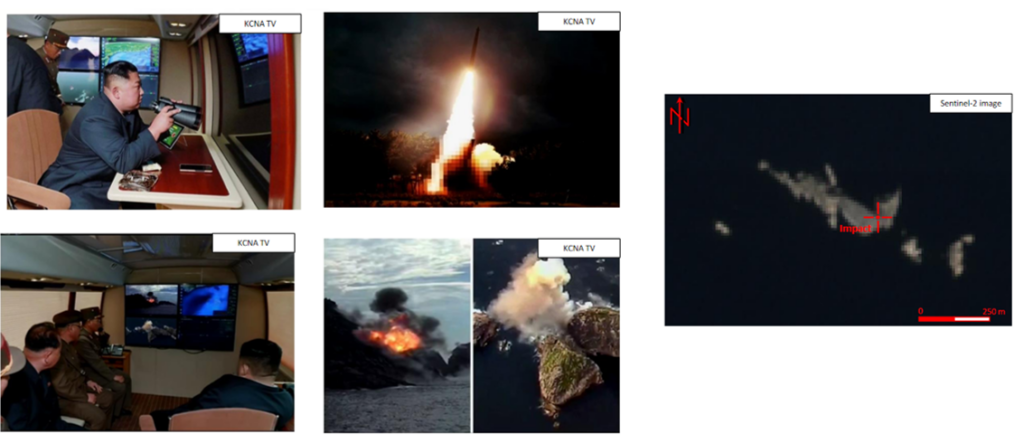
Conclusion and perspectives
The progress made by North Korea in developing its short-range arsenals in recent years and the impact it may have on the force balance on the Korean Peninsula shows that too little attention has been given until now to short-range developments. Especially, the international community as well as experts have focused on long-range systems, which may hold at risk targets in North America, but has underestimated the role of short-range systems in the transformation of North Korea’s military options on the peninsula. In addition to this, the analysis of North Korea’s capabilities has long focused on the number of weapons available, regardless of their accuracy or defence penetration capability. With the operationalisation of KN-23, KN-24 and KN-25, it is now impossible to overlook these capacities which may create vulnerabilities in the South Korean and US force postures.
Secondly, it is crucial to consider the military and political impact that these developments are likely to have. The political effect of North Korean deterrence will inevitably be enhanced if the likelihood of Pyongyang using its arsenal in a limited and controlled way is increased by the quality of its military equipment, both in relation to potential adversaries and with regard to the regime itself.
Finally, it must be observed that North Korea remains a potential source of ballistic proliferation and that the export of ballistic missiles such as the KN-23 and the KN-25 or the transfer of some of its technologies are a considerable threat. Both the consequences of such proliferation and the fact that it may follow non-traditional modes, in particular by favouring intangible technology transfer, calls for a renewed attention on the efforts to curb missile proliferation. This includes work to update export control mechanisms, to implement United Nations Security Council resolutions such as the 1540 resolution, to promote the universalisation of multilateral confidence-building regimes such as the Hague Code of Conduct, and more globally to invest in improving the global understanding of missile proliferation trends and impact.

